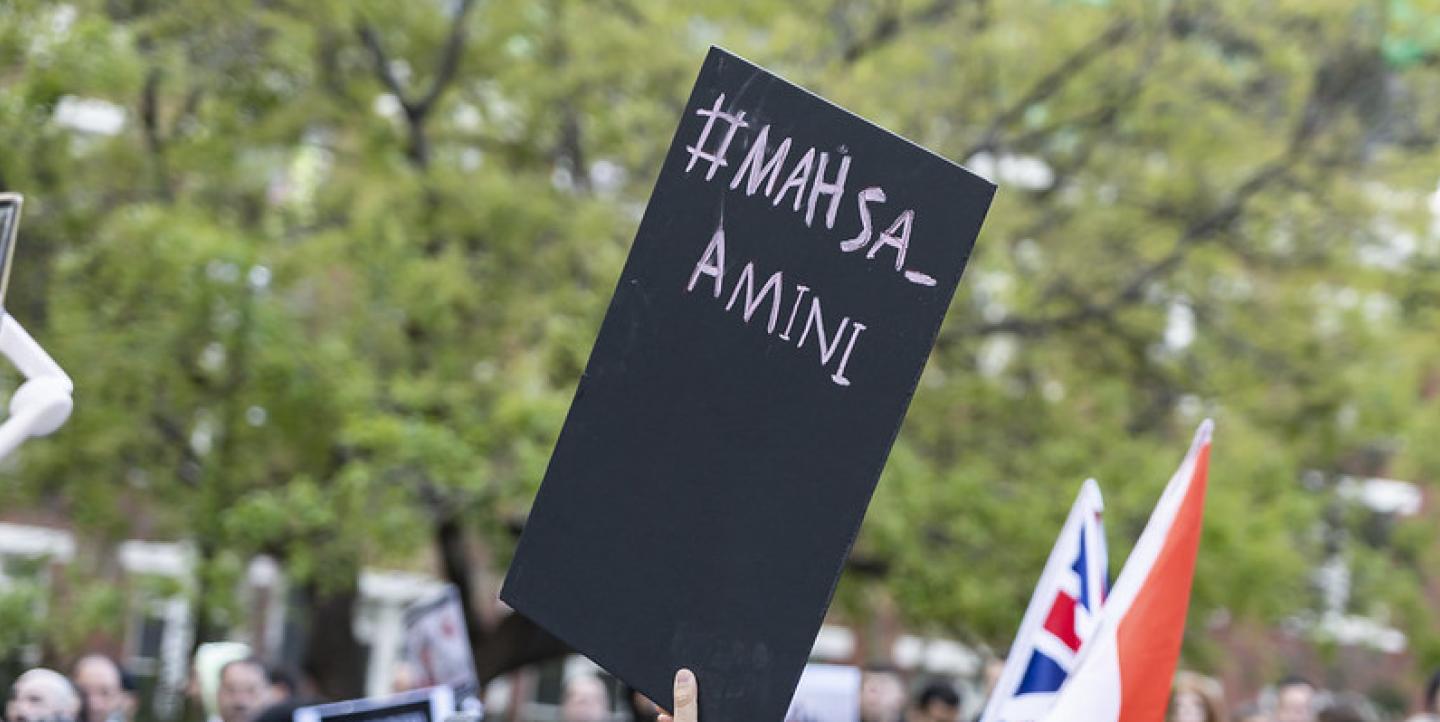On Thursday, September 15, a young woman named Mahsa Amini was arrested and reportedly beaten by Iran’s morality police for improperly wearing a hijab. She died in a hospital the next day.
Amini’s death sparked protests the very next day in cities across Iran. These have since expanded to at least 46 cities across the country, the largest nation-wide protests since 2019. At least 41 people have died and hundreds have been arrested during the protests. Actual figures are likely far higher, according to rights groups.
Accurate information on the rapidly unfolding protests and retaliatory crackdowns is difficult to acquire due to widespread internet and cellular networks blackouts across the country. Restrictions enacted by major Iranian internet providers have also targeted WhatsApp, LinkedIn and Skype.
For journalists reporting on the protests in Iran, the current situation requires careful consideration of digital and physical security for sources on the ground, the risks to their own freedom covering the protests, and the difficulties of accessing information for ordinary Iranians.
Here is what you need to know:
Events on the ground
Iranian security forces have used batons, birdshot, tear gas and water cannons to disperse protesters, as well as “deliberate and unlawful firing of live ammunition at protesters,” according to Amnesty International. Hundreds of citizens have been injured during the protests, and dozens more killed.
Women are leading the protests, demonstrating against, among others issues, the strict enforcement of the hijab law that requires women to fully cover their hair, enforced by the Iranian morality police. In response to Amini’s death, some women have publicly thrown off and burned their hijabs. Others have cut or shaved their hair in protest.
“It is a watershed moment in the history of Iran, because [the country has] never before seen a mass protest like this led by women in the history of Iran,” said Maziar Bahari, a Canadian-Iranian journalist and founder of IranWire, a citizen journalism platform for Iranian journalists.
Protesters’ grievances have expanded beyond the treatment of women. The country’s poor economic state, largely due to Western sanctions, corruption, and the current government’s hardline conservative policies — Ebrahim Raisi assumed the presidency in 2021, in what many consider a rigged election — have also fueled demonstrations.
Iranian officials deny that Amini was beaten by police, instead stating that she died of a heart attack, an account refuted by Amini’s family. Authorities have blamed the protests on an attempt by the U.S. to destabilize Iran.
Threats to journalists
Journalists reporting on Amini’s death and ensuing protests have faced threats and imprisonment by Iranian officials. Soon after demonstrations began, Nilufar Hamedi, a woman journalist who was one of the first to report Amini’s death, was arrested and is reportedly being held in solitary confinement. At least 20 journalists have been detained for reporting on the protests, according to the Committee to Protect Journalists. One photojournalist said she was beaten by security while arrested.
“It's just hell for journalism at the moment,” said Bahari. “The Revolutionary Guards [and the State] Intelligence Unit have contacted many newspaper editors around the country, asking them to tell the journalists to watch out and not tweet anything that's undesirable, to stop writing or sharing anything that might be undesirable.”
Journalists also face difficulties in getting information into and out of Iran. A partial internet blackout has been in effect since September 21, while authorities have restricted cell phone data and service from major carriers. Popular apps like WhatsApp and Instagram have also reportedly faced outages in the country. Signal, a popular encrypted messaging service, is the latest to be blocked.
Reporters Without Borders has called the measures “an unprecedented attack on the right to news and information in Iran.”
Digital security and communications
Journalists reporting on the protests from outside the country need to put the safety of their sources first, urged Bahari. “[Journalists] should always have the security of the people they talk to inside Iran as the most important priority for them. They have to trust the people inside Iran and trust that they know how to send messages to outside the country.”
Due to safety concerns, sources may be hesitant to publish their full names or other identifying details. Given the risks inherent to speaking out on the protests, editors and journalists should take measures to protect their sources’ identities, Bahari said.
Journalists should use end-to-end encrypted communication, such as Signal, Telegram or WhatsApp, which some Iranians can still access via proxy servers despite internet restrictions. Some Iranians are using landline connections to get around internet blockades, although they are slow substitutes for mobile data.
Quality of coverage
The kind of coverage and attention foreign journalists give to the protests is also important. Remember that Iranians – predominantly Iranian women – are leading the demonstrations with their own agency, grievances and demands that might not always neatly fit into pro- or ant-Western frameworks. Place what Iranian people are saying about the demonstrations at the forefront of your reporting.
The unrest, for example, began the day after Amini’s death, yet international media largely focused on the funeral of the Queen of England before turning to Iran days after the protests were well underway, Bahari noted. Similarly, news that CNN’s Cristiane Amanpour was denied an interview with Iranian President Raisi for refusing to wear a headscarf featured heavily in Western headlines, distracting from stories of everyday Iranians protesting on the streets.
Journalists should also be careful about the sources they use. “There are many political groups [with interests in Iran] who are trying to manipulate journalists,” said Bahari. Check the background of your sources, such as whether they’ve advocated for military intervention or violent regime change in the past. Such individuals might not share the interests of the Iranian people on the streets.
Finally, Bahari recommends against hyperbolizing the protests. Avoid the word “revolution,” for example: doing so can help avoid creating unrealistic expectations of regime change. Use words like “demonstrations” or “movement” instead.
“Iran is a country, an old country with 3,000 years of history, and [it has] gone through many turbulent times in its history. This is one of them. This is not a revolution yet. This might be a movement that might lead to a revolution, but it's not over yet,” he said.
Tools for journalists in Iran
Iran After Dark offers tools and resources for people in Iran to gain access to the internet in the event of an internet shutdown. Their internet shutdown toolkit is one such resource.
Download and install a VPN, such as TunnelBear VPN, which provides access to some blocked websites in Iran. Here are some other ways to stay online during internet shutdowns.
Toosheh allows you to receive news and information from across the world over satellite technology, and is frequently used in Iran and the Middle East.
Briar is a messaging app that will help you stay connected to people who are physically close to you using Bluetooth technology when the internet is completely shut down.
This article was written on Tuesday, September 27. As events continue to unfold it may be updated to reflect new developments.
Image by Matt Hrkac on Flickr.


